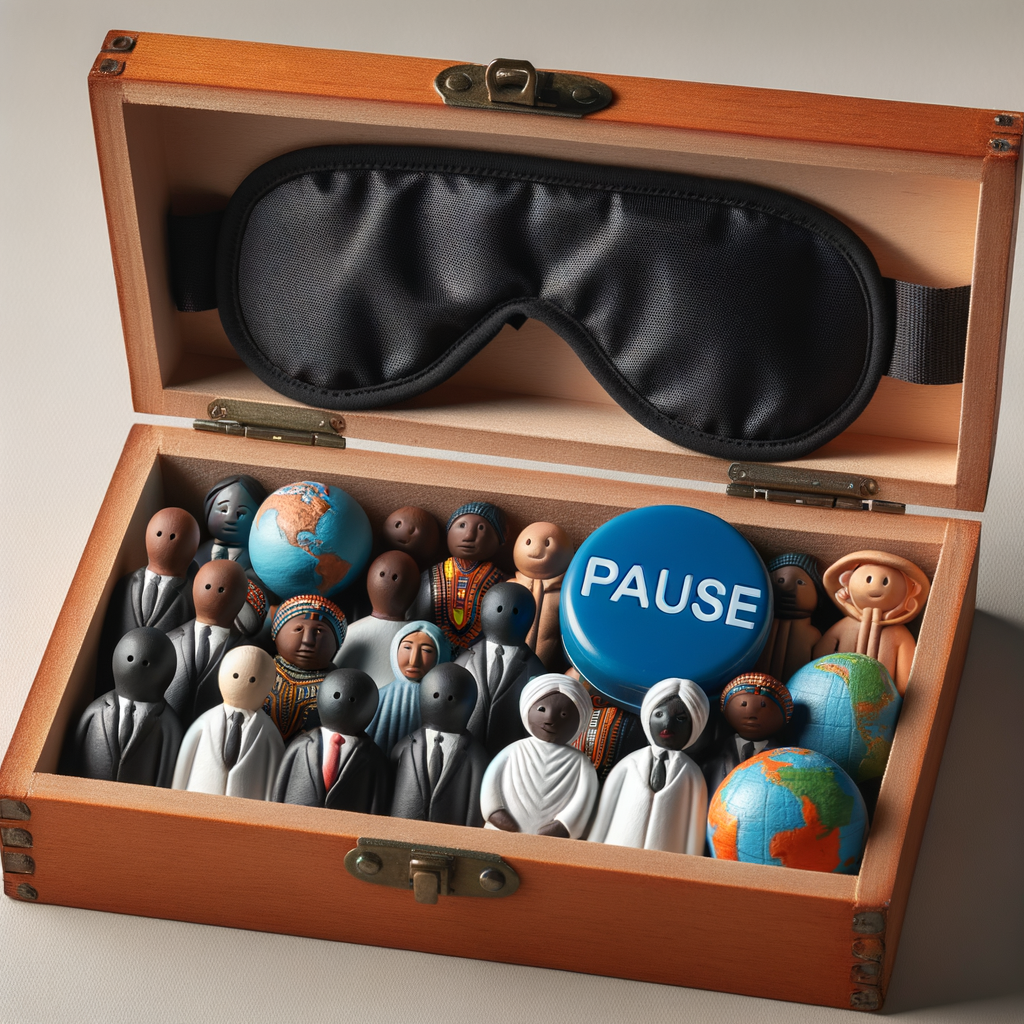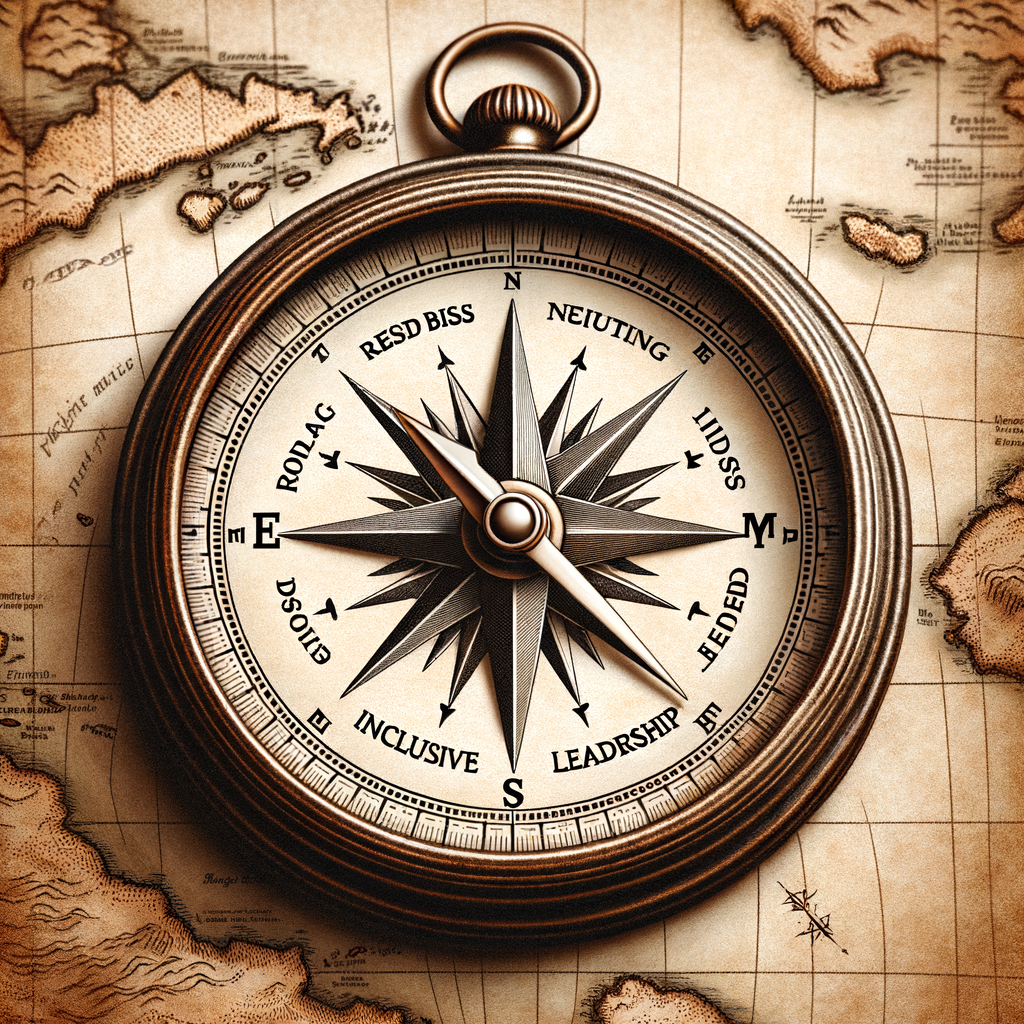Unveiling the Invisible: A Leader's Guide to Dismantling Unconscious Bias
Unveiling the Invisible: A Leader’s Guide to Dismantling Unconscious Bias
In the labyrinth of human cognition, unconscious bias lurks in the shadows, subtly influencing decisions and shaping perceptions without our awareness. For leaders striving to cultivate diverse, equitable, and high-performing teams, addressing these hidden biases is not just a moral imperative — it’s a strategic necessity. But how can one combat an enemy that operates beneath the surface of consciousness? Let’s embark on a journey to unravel this complex challenge and equip leaders with powerful tools to foster truly inclusive environments.

The Illusion of Objectivity
Picture this: Sarah, a brilliant project manager, sits in a meeting room, her eyes scanning the resumes of potential hires. She prides herself on her fair and impartial judgment. Yet, as she reviews the applications, she finds herself drawn to candidates from her alma mater, unconsciously associating their educational background with competence and cultural fit. This scenario plays out in countless organizations daily, with decision-makers unaware of the subtle biases coloring their choices.
Unconscious bias is not a character flaw — it’s a feature of human cognition, shaped by our experiences, cultural context, and evolutionary history. Our brains, designed for quick decision-making in a primitive world, rely on mental shortcuts that can lead us astray in complex modern environments. Recognizing this universality is the first step in addressing bias effectively.

Illuminating the Shadows: Strategies for Bias Detection
Before we can challenge bias, we must become adept at recognizing it. Here are some strategies leaders can employ to bring unconscious biases to light:
1. The Mirror Exercise: Encourage team members to regularly reflect on their decision-making processes. After important meetings or decisions, prompt them to ask: “What assumptions did I make? Would I have responded differently if the person’s gender, race, or background were different?”
2. Data Diving: Implement systems to track decisions over time. Look for patterns in hiring, promotions, or project assignments. Are certain groups consistently favored or overlooked? Data can reveal biases that individual introspection might miss.
3. The Flip Test: When evaluating a situation or making a decision, try mentally flipping the characteristics of the individuals involved. Would your perception change if the male candidate were female, or if the young team member were older? This simple exercise can reveal hidden biases.
4. Implicit Association Tests: While controversial, these tests can serve as a starting point for self-reflection and discussion. Use them not as definitive measures, but as tools to spark awareness and conversation.
5. The Outsider Perspective: Regularly invite individuals from diverse backgrounds to observe and provide feedback on team dynamics and decision-making processes. Fresh eyes can spot patterns that have become invisible to insiders.

From Awareness to Action: Strategies for Bias Reduction
Awareness alone is insufficient. To create lasting change, leaders must actively work to rewire cognitive patterns and reshape organizational cultures. Here are some powerful strategies:
1. The Pause Principle: Implement a mandatory “pause” before major decisions. This break allows time for reflection and can disrupt automatic, bias-driven thinking. In high-stakes situations, consider instituting a “sleep on it” policy for critical choices.
2. Blind Evaluation Processes: Where possible, remove identifying information from resumes, project proposals, or performance reviews. This approach has shown remarkable results in reducing gender and racial biases in various fields.
3. Diverse Decision-Making Panels: Ensure that decision-making bodies reflect the diversity you aspire to achieve in your organization. Different perspectives can help counterbalance individual biases.
4. The Devil’s Advocate Role: Assign team members to play devil’s advocate in discussions, challenging assumptions and presenting alternative viewpoints. Rotate this role to ensure everyone practices thinking from different perspectives.
5. Empathy-Building Experiences: Create opportunities for team members to step into others’ shoes. This could involve immersive role-playing exercises, virtual reality experiences, or structured conversations with individuals from different backgrounds.
6. Bias-Interruption Phrases: Develop a shared vocabulary for respectfully pointing out potential biases in real-time. Phrases like “Let’s pause and reflect” or “I’m wondering if we’ve considered all perspectives here” can serve as gentle interruptions to bias-driven discussions.

The Neuroscience of Change: Rewiring for Inclusivity
Understanding the neuroscience behind bias can empower leaders to design more effective interventions. Our brains are remarkably plastic, capable of forming new neural pathways throughout our lives. This neuroplasticity is the key to overcoming ingrained biases.
Consider the case of Alex, a senior executive who realized he had a bias against younger team members, often dismissing their ideas as naive or impractical. Recognizing this bias, Alex committed to a deliberate practice of seeking out and seriously considering ideas from younger colleagues. Over time, this practice not only led to innovative solutions for the company but also reshaped Alex’s automatic responses, creating new neural pathways that associated youth with valuable insights.
To leverage neuroplasticity in bias reduction:
1. Repetition is Key: Design regular exercises and practices that challenge biases. Consistency is more important than intensity.
2. Emotional Engagement: Create experiences that evoke empathy and positive emotions associated with diversity. Our brains are more likely to rewire when emotions are involved.
3. Immediate Feedback: Implement systems for quick feedback on inclusive behaviors. The shorter the gap between action and feedback, the more effective the learning.
4. Visualization Techniques: Encourage team members to regularly visualize positive interactions with individuals different from themselves. This mental rehearsal can help reshape unconscious associations.
5. Mindfulness Practices: Introduce mindfulness techniques to increase overall self-awareness and cognitive control, making it easier to catch and correct biased thinking.

Beyond the Individual: Systemic Approaches to Bias Reduction
While individual change is crucial, lasting transformation requires addressing the systemic factors that perpetuate bias. Leaders must look beyond personal interventions to reshape organizational structures and cultures.
1. Structural Audit: Conduct a thorough review of organizational policies, procedures, and practices. Look for systemic biases embedded in seemingly neutral processes.
2. Inclusive Design Principles: Apply inclusive design thinking to all aspects of the organization, from physical spaces to digital interfaces. Consider how different individuals might experience and interact with your systems.
3. Accountability Metrics: Develop clear, measurable goals for diversity, equity, and inclusion. Tie these metrics to leadership performance evaluations and compensation.
4. Cultural Artifacts: Pay attention to the subtle messages conveyed by your organizational culture. From the art on the walls to the examples used in training materials, ensure that your environment reflects and celebrates diversity.
5. Network Analysis: Conduct regular analyses of informal networks within the organization. Are there patterns of exclusion or homogeneity in social and professional connections? Use this data to inform interventions and team-building activities.
6. Language Audit: Review all internal and external communications for biased language or assumptions. Develop guidelines for inclusive communication that go beyond surface-level political correctness to address deeper linguistic biases.

The Paradox of Awareness: Navigating Unintended Consequences
As leaders dive deep into bias reduction efforts, they may encounter a puzzling phenomenon: sometimes, increased awareness can initially lead to more biased behavior. This paradox occurs when individuals become hyper-aware of differences, leading to awkwardness or overcorrection.
Take the case of a tech company that implemented an aggressive bias training program. In the weeks following the training, some managers reported feeling paralyzed in their interactions with diverse team members, afraid of saying or doing the wrong thing. This discomfort led to reduced communication and missed mentorship opportunities — the opposite of the intended outcome.
To navigate this paradox:
1. Normalize Discomfort: Frame discomfort as a natural part of the growth process. Encourage open discussions about the awkwardness that can arise during this learning phase.
2. Focus on Commonalities: While acknowledging differences, emphasize shared goals and human experiences to build connections across diverse groups.
3. Practice Scenarios: Provide ample opportunities for team members to practice inclusive behaviors in low-stakes settings. Role-playing exercises can help bridge the gap between awareness and comfortable action.
4. Celebrate Small Wins: Recognize and celebrate instances of successful bias interruption or inclusive behavior, no matter how small. This positive reinforcement can help overcome the paralysis of hyper-awareness.
5. Long-Term Perspective: Remind the team that true change takes time. The initial awkwardness is a sign of growth, not failure.
The Frontier of Bias Research: Emerging Insights
As we stride into the future, new research continues to shed light on the complex nature of unconscious bias and innovative approaches to addressing it. Leaders at the forefront of this challenge should keep an eye on these emerging insights:
1. Intersectionality in Bias: Recent studies have highlighted the compounded effects of multiple, intersecting biases. For instance, a Black woman may face unique biases that are not simply the sum of racial and gender biases. Leaders must develop more nuanced approaches that address these complex intersections.
2. Artificial Intelligence and Bias: As AI becomes more prevalent in decision-making processes, we’re discovering new forms of algorithmic bias. Cutting-edge organizations are developing AI auditing tools and ethical AI frameworks to ensure that our technological solutions don’t perpetuate or exacerbate human biases.
3. Neuroplasticity-Based Interventions: Advances in neuroscience are leading to more targeted interventions for bias reduction. Some researchers are exploring the use of non-invasive brain stimulation techniques to enhance the brain’s plasticity during bias training sessions.
4. Microaffirmations: While much attention has been paid to combating microaggressions, emerging research suggests that actively practicing microaffirmations — small acts that foster inclusion and affirm people’s value — can be a powerful tool in creating inclusive environments.
5. Environmental Priming: Studies in environmental psychology are revealing how subtle cues in our physical environment can prime certain biases or, conversely, promote more inclusive thinking. Forward-thinking leaders are redesigning workspaces based on these insights.

The Ethical Imperative: Beyond Business Benefits
While the business case for diversity and inclusion is well-established — diverse teams are more innovative, make better decisions, and often outperform homogeneous groups — it’s crucial for leaders to recognize the deeper ethical imperative at play.
Consider Maria, a brilliant software engineer who left a prestigious tech firm due to the subtle but persistent biases she encountered. Despite the company’s stated commitment to diversity, Maria found herself consistently overlooked for high-profile projects and leadership opportunities. The cumulative effect of these experiences not only robbed the company of her talents but also inflicted a personal toll on Maria’s confidence and well-being.
This scenario underscores a fundamental truth: the fight against unconscious bias is not just about organizational performance — it’s about human dignity and the ethical obligation to create environments where every individual can thrive.
Leaders must frame bias reduction efforts not as a checkbox for corporate social responsibility, but as a core expression of organizational values and a fundamental human rights issue. This ethical framing can provide a deeper, more sustainable motivation for change, even when the immediate business benefits are not apparent.

The Journey Ahead: Cultivating Resilience and Commitment
As we conclude our exploration of unconscious bias, it’s important to acknowledge that this work is not a destination but an ongoing journey. Progress may be slow, setbacks will occur, and new challenges will emerge. The key to long-term success lies in cultivating resilience and unwavering commitment.
Here are some strategies for maintaining momentum:
1. Celebrate Progress: Regularly highlight success stories and positive changes, no matter how small. These victories fuel motivation and demonstrate the impact of collective efforts.
2. Create Accountability Partners: Encourage team members to pair up as accountability partners, checking in regularly on personal growth and bias reduction goals.
3. Continuous Learning: Stay abreast of new research and best practices. Consider establishing a “bias book club” or regular learning sessions to keep the topic fresh and engaging.
4. Share Vulnerabilities: As a leader, be open about your own biases and learning journey. This vulnerability creates psychological safety for others to engage honestly in the process.
5. Integrate into Core Processes: Embed bias awareness and reduction strategies into everyday workflows, rather than treating them as separate initiatives.
6. Build a Community of Practice: Connect with other leaders and organizations engaged in similar work. Sharing challenges and solutions can provide invaluable support and inspiration.
7. Measure and Iterate: Regularly assess the impact of your efforts using both quantitative and qualitative measures. Be willing to adjust strategies based on what you learn.
In closing, the task of challenging and reducing unconscious bias in our teams is monumental, but it is also one of the most important challenges leaders face today. By committing to this work, we not only enhance our organizations’ performance but also contribute to building a more just and equitable world.
As you embark on or continue this journey, remember that every small action, every bias interrupted, every inclusive decision made, ripples outward, creating change far beyond what we can see. In the words of anthropologist Margaret Mead, “Never doubt that a small group of thoughtful, committed citizens can change the world; indeed, it’s the only thing that ever has.”
Let us be that group, starting with our teams, our organizations, and ourselves. The future we create will be shaped by the biases we dismantle today.


